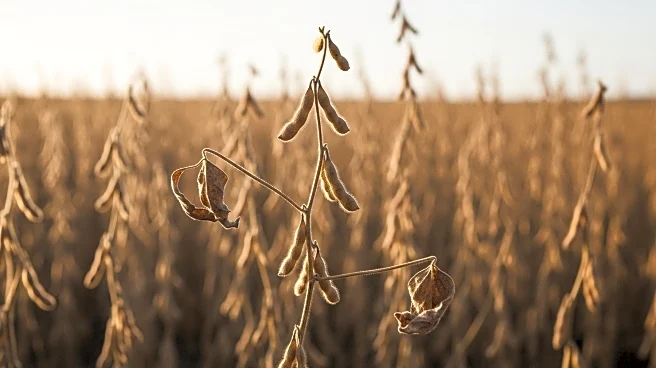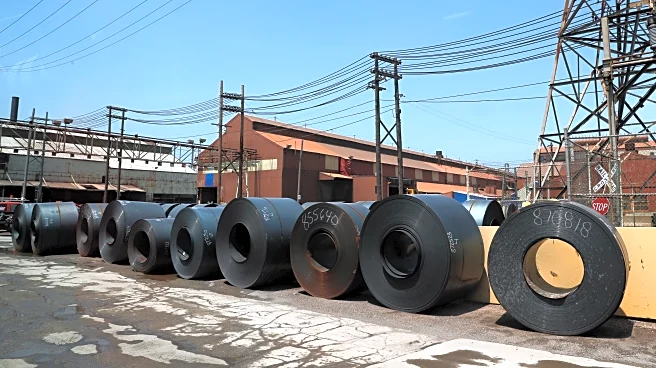What is the story about?
What's Happening?
Farmers in the Midwest are facing challenges as soybeans are harvested at moisture levels as low as 9-10% due to moderate to severe drought conditions in regions like southern Illinois, Indiana, and Ohio. Purdue Extension soybean specialist Shaun Casteel highlights that harvesting soybeans this dry can result in yield losses, brittle pods, and tough harvest conditions. Soybeans typically target 13% moisture for optimal yield, and any drying below this level leads to permanent yield loss. The dry conditions also increase the risk of seed coat cracking and shattering, especially if the crop undergoes multiple wet-dry cycles before harvest.
Why It's Important?
The drought-induced low moisture levels in soybeans can significantly impact farmers' profits and the overall agricultural economy. Yield losses due to reduced moisture content translate into financial losses for farmers, affecting their ability to sustain operations. Additionally, the challenges in harvesting dry soybeans can lead to increased operational costs and reduced efficiency. The broader agricultural industry may face supply chain disruptions and price fluctuations as a result of these yield losses, impacting food availability and market stability.
What's Next?
Farmers are advised to carefully adjust their combines to minimize losses during harvest. With forecasts predicting showers, some growers may consider delaying harvest to regain moisture, but caution is advised as rain in drought-stricken areas is often insufficient. Farmers must assess their fields and make informed decisions to optimize harvest outcomes. Continued monitoring of weather patterns and moisture levels will be crucial in managing the impact of drought on soybean crops.
Beyond the Headlines
The situation underscores the importance of developing drought-resistant crop varieties and improving irrigation techniques to enhance resilience against climate-induced challenges. As droughts become more frequent and severe, the agricultural sector must adapt to changing environmental conditions to ensure food security and economic stability. Ethical considerations regarding resource allocation and support for affected farmers may also arise, as stakeholders navigate the complexities of drought response and recovery.
AI Generated Content
Do you find this article useful?














